Itinerary Samples
-

Itinerary Template
download now -

Itinerary Planner
download now -

Travel Itinerary Sample
download now -

Itinerary Sample for Students
download now -

Vacation Itinerary Planner Template
download now -

Travel Itinerary Template
download now -

Best Travel Itinerary Template
download now -

Trip Itinerary Template
download now -

Blank Travel Itinerary Template
download now -

Vacation Itinerary Template
download now -

Holiday Itinerary Template
download now -

Business Travel Itinerary
download now -

Sample Itinerary Template
download now -

Simple Road Trip Itinerary Template
download now -

Itinerary Planner Template
download now -

Business Trip Itinerary Template
download now -

Daily Itinerary Template
download now -

Modern Wedding Itinerary Template
download now -

Sample Wedding Itinerary Template
download now -

Wedding Event Itinerary
download now -
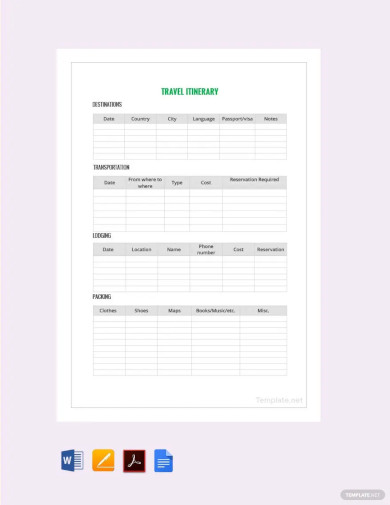
Sample Travel Itinerary Template
download now -
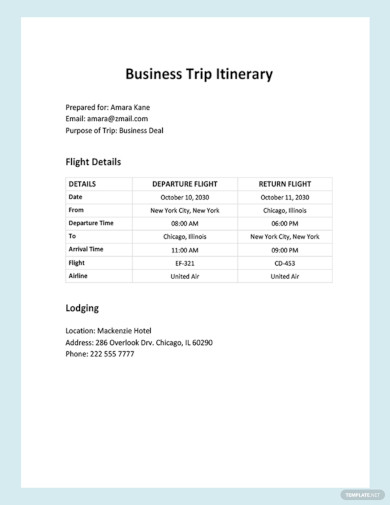
Small Business Trip Itinerary Template
download now -

Executive Travel Itinerary Template
download now -

Birthday Itinerary Template
download now -

Meeting Itinerary Template
download now -

Weekend Itinerary Template
download now -

Printable Party Itinerary Template
download now -

Simple Travel Itinerary Template
download now -

Wedding Weekend Itinerary Template
download now -
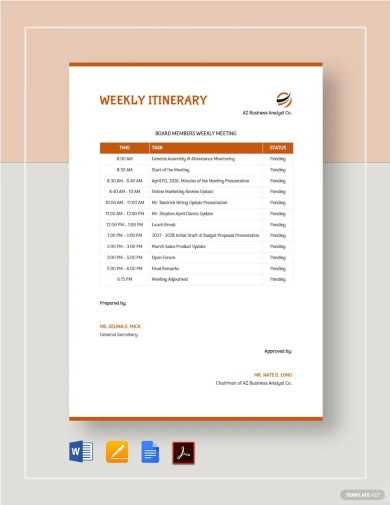
Weekly Itinerary Template
download now -

Sample Vacation Itinerary
download now -

Sample Flight Itinerary
download now -

Career Management Itinerary Action Plan
download now -

Travel port Itinerary Fare Quote
download now -

Sample Reunion Itinerary
download now -

Sample Itinerary in PDF
download now -

Sample Tour Itinerary
download now -

Sample Bus Itinerary
download now -

Sample Academic Program Itinerary
download now -

Sample Itinerary Letter
download now -

Basic Itinerary
download now -

Sample Holiday Itinerary
download now -

Travel Itinerary Project
download now -

Sample Host Country Itinerary
download now -

Sample On-Campus Interview Itinerary
download now -

Itinerary Preparation and Tour Packaging
download now -

Printable Wedding Itinerary
download now -

Sample Business Itinerary Letter
download now -

Sample Creative Itinerary Day
download now -

Sample Family Vacation Itinerary Policy
download now -

Trip Itinerary and Parental Consent
download now -

Day to Day Meeting Itinerary
download now -

Sample Cultural Event Day Itinerary
download now -

Grantee Party Travel Itinerary
download now -

Travel Itinerary Format
download now -
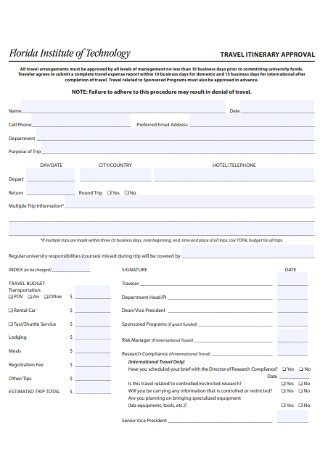
Travel Itinerary Approval
download now -

Standard Itinerary
download now -

Sample Origin Trip Itinerary
download now -

Blank Club Sport Travel Itinerary Form
download now -
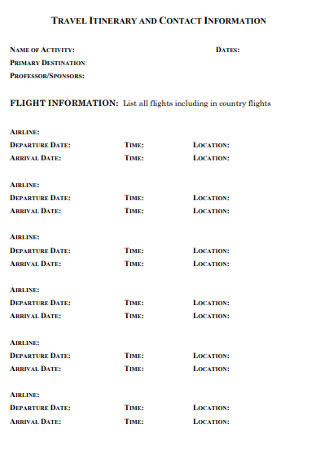
Travel Itinerary and Contract Information
download now -

Trip Itinerary Planner Form
download now -

Tentative Design Itinerary
download now -

Sample 3 Day Group Itinerary
download now -

Daily Road Show Itinerary
download now -

Student Travel Itinerary
download now -

Sample Program Itinerary
download now -

Journey of Understanding Itinerary
download now -

Trail Bike Ride Itinerary
download now -

Student and Parent Itinerary
download now -

High School Sample Itinerary
download now -

Client Travel Itinerary
download now -

District Itinerary
download now -

Travel Itinerary Project
download now -
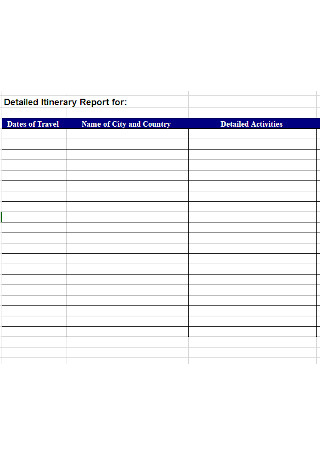
College Itinerary Report
download now
FREE Itinerary s to Download
Itinerary Format
Itinerary Samples
What is an Itinerary?
Importance and Benefits of an Itinerary
Elements of an Itinerary
How to Create an Itinerary
The Dos and Don’ts of an Itinerary
What Are the 3 Types of Itinerary?
What Are the 5 Components of Itinerary?
What Are the Qualities of a Good Itinerary?
What Are the 4 Types of Itinerary?
What Are the Four Main Aspects of an Itinerary?
What Does Take Itinerary Mean?
Do You Need Your Itinerary?
What Should an Itinerary Look Like?
How Does an Itinerary Work?
What Is the Main Focus of Itinerary?
How Do I Start an Itinerary?
Itinerary Format
Trip Itinerary for [Destination]
Traveler Name(s): Date of Travel:
1. Overview
- Brief summary of the trip purpose and destination.
2. Travel Details
- Flight Information:
- Departure: [Date, Time, Airport]
- Arrival: [Date, Time, Airport]
- Flight Number: [Flight Number]
- Accommodation:
- Hotel Name: [Hotel Name]
- Address: [Hotel Address]
- Check-in Date: [Date]
- Check-out Date: [Date]
3. Daily Schedule
- Day 1: [Date]
- Activity 1: [Time, Location, Details]
- Activity 2: [Time, Location, Details]
- Day 2: [Date]
- Activity 1: [Time, Location, Details]
- Activity 2: [Time, Location, Details]
- Day 3: [Date]
- Activity 1: [Time, Location, Details]
- Activity 2: [Time, Location, Details]
4. Important Contacts
- Local Contact:
- Name: [Contact Name]
- Phone: [Contact Phone]
- Emergency Contact:
- Name: [Contact Name]
- Phone: [Contact Phone]
5. Additional Information
- Any other relevant details or notes for the trip.
What is an Itinerary?
An Itinerary is a detailed plan or schedule of a trip, outlining all travel arrangements, accommodations, activities, and other essential details. It serves as a roadmap to ensure a well-organized and smooth journey. A well-crafted Itinerary helps travelers stay on track and make the most of their time, reducing the likelihood of missed connections or unplanned delays.
An itinerary is more than just a comprehensive plan for a route or journey when used for business purposes. Using an itinerary enables you to store all the necessary information you will need for your business trip in one place. Such information includes your travel date, location of both departing and arriving airports, transportation, accommodation, and so on. Even if you don’t have a personal assistant, having an itinerary will suffice. You can also save a lot of resources when you take on business trips with a well-prepared business itinerary.

Importance and Benefits of an Itinerary
Pursue deals, attend conferences, and make partnerships with prominent individuals in the business world?these are only some of what you can benefit from when you go on business trips. The success of any business trips lies in the itinerary used. Itineraries are more than just a sheet of paper that contains your travel schedule. That said, we listed the importance and benefits of having an itinerary to convince you to make one of your own.
Elements of an Itinerary
Make your business itinerary functional enough for any of your corporate travels by incorporating the important elements that make it so. These elements are crucial in helping you to come up with an adequate itinerary that is perfect for your travel needs.
How to Create an Itinerary
Now that you know the importance, benefits, and elements of an itinerary, it should now be easier for you to create your business itinerary that serves its purpose well on your end. To help you throughout the process, we provide these easy-to-follow steps that can serve as your guide.
Step 1: Use a Ready-made Template
If you go on business trips more often, it is best to use a ready-made itinerary template so you will no longer have to keep on starting from scratch every time you need one. Choose from a wide selection of itinerary templates which you can download in this very article you’re reading. While you can use a template as is, it is best to customize any template you download because most of the templates you can find online contain general contents. Looking for a template that exactly fits your needs is time-consuming, that is why customizing is essential as this can help you in creating an itinerary that is functional enough and suitable to your needs. You may also see Nursing Care Plan
Step 2: Add Your Preferred Elements
As part of customizing your templates, it is important to add the elements you prefer to include in your business travel itinerary. The elements you may need to secure important dates, destination, departure and arrival time, connecting flight details, business transaction, details, transportation details, accommodation details, things to bring, and so on. Ensure that whatever features you incorporate in your itinerary are accurate. You may also see Floor Plan
Step 3: Make Room for the Unexpected
No matter how well-planned your business trips are, it is important to always make room for any unexpected and unfortunate things that might happen, such as delayed flights, traffic, canceled meetings, and the like. Make plans that are flexible enough to suit whatever changes that you might encounter along the way. One of the best ways to make room for any unexpected circumstances is to add extra time between one destination to another that will serve as a leeway in case unforeseeable events that might happen. You may also see School Action Plan
Step 4: Make Space for Notes
To further make room for any unexpected things to happen, it is best to make space in your itinerary where you can write down notes. By doing so, whenever there are changes along the way, you can easily document all these. Doing so can also benefit you when you write your business report template as it serves as your paper trail and helps you remember all that happened during your business trip.
Step 5: Review Your Itinerary
Before printing your itinerary, review all of its contents first. Check the accuracy of the time, date, location, and direction. Be sure that the spelling of the places you are heading to are correct to avoid getting lost and any other confusion. Make sure that everything is in order. Your itinerary should help you clear your mind when traveling, so see to it that your itinerary is not overcrowded or it will only defeat its purpose. You may also see Workout Plan
The Dos and Don’ts of an Itinerary
Ready to create what could be your very first itinerary? Then do take note of some of these dos and don’ts when creating and using an itinerary for business travel purposes. You may also see Agriculture Business Plan
Dos
1. Do make the most out of your time.
When you go on a business trip, know that you only have limited time. That is why when writing your itinerary, see to it that you are realistic with your timing. You need to consider all the things that play a significant factor in your travel experiences, such as travel time between one destination to another and even the possibility of getting lost in between locations. Who knows? After completing all business-related tasks, you can squeeze in some time where you can do enjoyable things without having to extend your stay. You may also see Sales Plans & Sales Strategy
2. Do enjoy it and have fun.
It doesn’t mean that going on a business trip means you have to be rigid with your plans. Keep in mind that it might be your first time to go to the destination of your business trip. Even if it is a business trip, find ways that you can enjoy and have fun. Enjoy the view when you take on a bus or a train ride. Appreciate their cuisine. Try going to nearby tourist spots. If it improves your overall business trip experience, then do not be afraid to do things that give a contribution worth considering. You may also see School Development Plan
Don’ts
1. Don’t create plans that are not flexible.
Plans should be able to make you move around freely and not to restrict you. That is why it is important to create plans that are flexible enough that it can accommodate the unexpected things that might happen during your business trip. What if the client cancels your appointment on the day you were supposed to meet? What if there is heavy traffic on the way to your meeting place? What if you had a delayed flight? There are so many things that might happen that if you follow a rigid set of plans, you will find it hard to adjust when you are already in the actual situation. You may also see Fast Food Business Plan
2. Don’t overcrowd your itinerary.
A crowded itinerary defeats the purpose of having an itinerary in the first place. Traveling with an overcrowded itinerary might cause trouble and inconvenience instead of what it’s supposed to do which is to make a hassle-free business trip. Overcrowding results from overplanning and overthinking. Resist the urge to pile up all of your plans and be realistic in planning your activities. Know what your limitations are and what you can manage within the day. It is also crucial that you organize your itinerary so you wouldn’t mix things up and cause more confusion. You may also see Digital Marketing Plan
3. Don’t overthink.
Creating an itinerary for a business trip entails a lot of decision-making. Where to stay for the night? What to ride from point A to point B? Where to get your meals? How to get to the meeting place? With all the possibilities on the line, it can’t be helped tends to make you overthink too much to the point that you can’t get anything done at all. To avoid overthinking things, simply do two important things: know your priorities and know what can enhance your business trip experience. By knowing these two things, so you can easily narrow down your options and simplify your travel experience. You may also see Transportation Business Plan
What Are the 3 Types of Itinerary?
Itineraries can vary based on the nature and purpose of travel. The three main types include:
- Scheduled Itinerary: Lists exact times and locations for activities, ideal for business trips.
- Flexible Itinerary: Allows adjustments and changes, suitable for leisure trips.
- Custom Itinerary: Tailored to specific needs and preferences, often used by travel agencies when preparing a Travel Agency Proposal.
What Are the 5 Components of Itinerary?
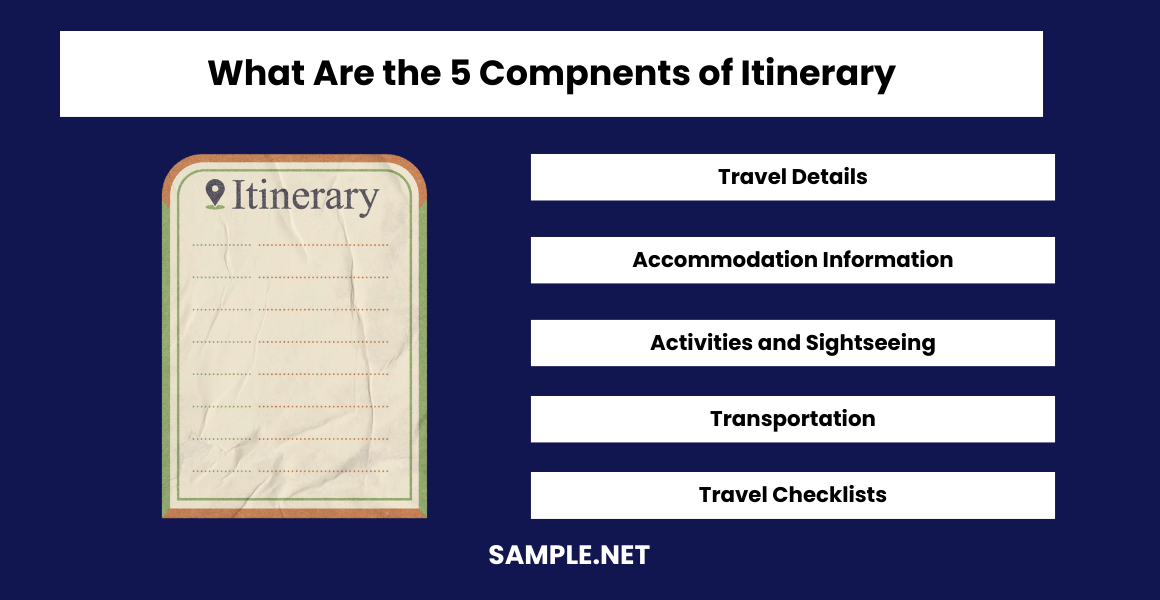
A comprehensive itinerary includes several key components to ensure a well-organized trip:
- Travel Details: Include flight numbers, departure, and arrival times.
- Accommodation Information: List hotel names, addresses, and check-in/check-out times.
- Activities and Sightseeing: Outline planned activities and visits.
- Transportation: Provide details of transportation between locations.
- Travel Checklists: Include essential items to pack and prepare. You may also see Training Plan
What Are the Qualities of a Good Itinerary?
A good itinerary ensures a smooth and enjoyable travel experience by having the following qualities:
- Clarity: Clear and easy to understand, with all details well-organized.
- Flexibility: Allows for adjustments as needed.
- Comprehensive: Covers all aspects of the trip, including Travel Receipt.
- Realistic: Plans realistic timelines and distances between activities.
- Engaging: Includes activities that interest and excite the traveler.
What Are the 4 Types of Itinerary?
Different types of itineraries serve various travel purposes. The four main types include:
- Tour Itinerary: Planned by tour operators, includes a fixed schedule of activities.
- Corporate Itinerary: Designed for business trips, focusing on meetings and events.
- Leisure Itinerary: Flexible and relaxed, tailored for vacations.
- Specialized Itinerary: Created for specific purposes like Travel Grant Proposal trips, focusing on research or study.
What Are the Four Main Aspects of an Itinerary?
An effective itinerary covers four essential aspects to ensure smooth travel:
- Destination Information: Details about the places to be visited.
- Time Management: A clear schedule of activities and timings.
- Logistics: Information on transportation and accommodations.
- Budgeting: Detailed Travel Budget to manage expenses.
What Is the Purpose of an Itinerary?

An itinerary serves multiple purposes, making travel more organized and efficient:
- Organization: Keeps travel plans structured and well-organized.
- Time Management: Ensures efficient use of time during the trip.
- Preparation: Helps travelers prepare and pack appropriately.
- Documentation: Acts as a record of travel details and plans.
- Guidance: Provides a roadmap for the trip, similar to a detailed Travel Checklist.
What Does Take Itinerary Mean?
“Take itinerary” means to follow a detailed plan of your travel schedule, including flights, accommodations, and activities, as outlined in a Business Plan.
Do You Need Your Itinerary?
Yes, having your itinerary helps organize travel plans, manage time efficiently, and ensures all arrangements are in place, supporting your Strategic Plan.
What Should an Itinerary Look Like?
An itinerary should be clear and organized, listing travel details, accommodations, activities, and essential information, similar to a Travel Expense Report.
How Does an Itinerary Work?
An itinerary works by providing a structured plan for your trip, outlining each step and ensuring all travel arrangements are managed effectively, like a Travel Services Agreement.
What Is the Main Focus of Itinerary?
The main focus of an itinerary is to ensure a well-organized and smooth travel experience, detailing all necessary arrangements and activities, similar to a Travel Expense Proposal.
How Do I Start an Itinerary?
Start an itinerary by listing all travel details, including flights, accommodations, and activities. Ensure it aligns with your Travel Management Proposal for a comprehensive plan.
In conclusion, mastering the creation of an Itinerary is crucial for efficient travel planning. With our guide, you have learned how to draft detailed samples, forms, and letters, ensuring your travel plans are well-organized and stress-free. Utilizing the provided templates and tips, you can streamline your planning process and enhance the overall travel experience. For more detailed examples and templates, visit Travel Budget Worksheet.

